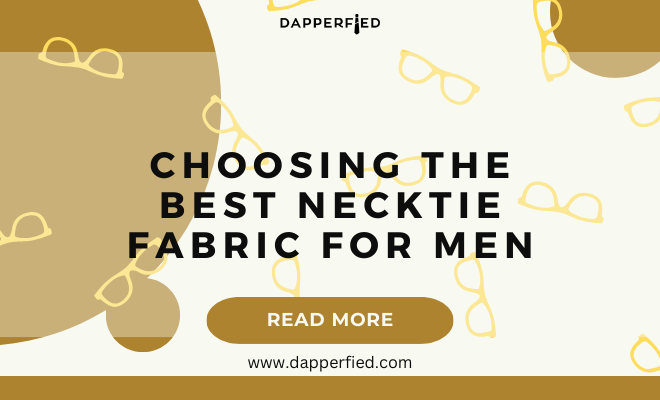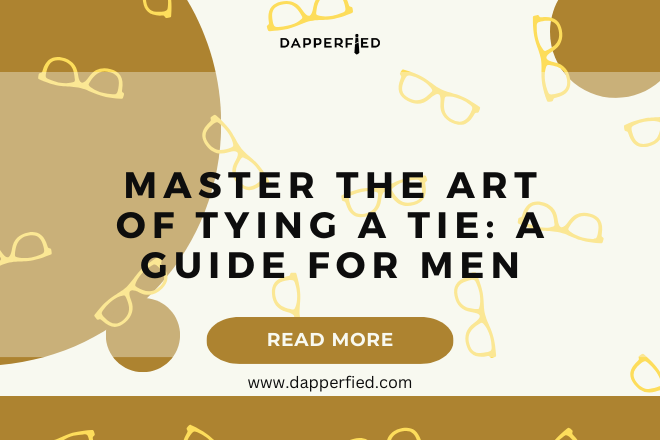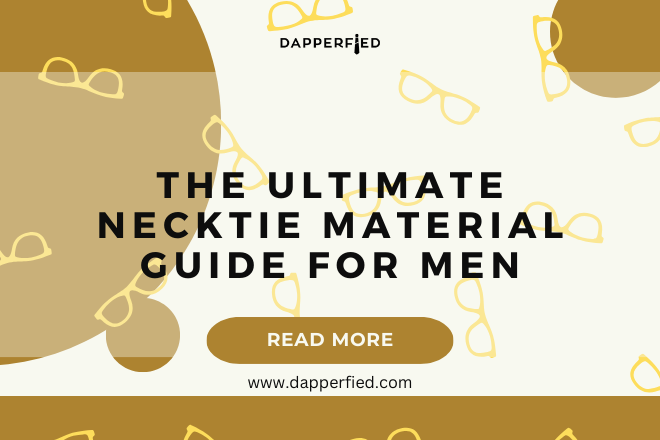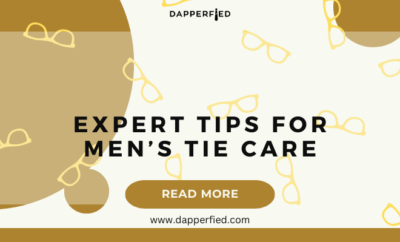
Men's Style
Choosing the Best Necktie Fabric for Men
When it comes to necktie fabrics, there are several options to choose from, each with its own unique characteristics and qualities. Understanding the different necktie fabrics can help you make an informed decision when selecting the perfect tie for any occasion. Silk, wool, cotton, linen, and blends are some of the most common fabrics used for neckties, and each has its own distinct advantages and disadvantages. Silk is known for its luxurious feel and lustrous appearance, while wool offers warmth and texture. Cotton is a versatile and casual option, and linen is lightweight and breathable. Blends combine different fabrics to create unique qualities that cater to specific needs. By understanding the properties of each fabric, you can choose a necktie that not only complements your outfit but also suits the occasion and your personal style.
Silk is a natural protein fiber known for its softness, luster, and durability. It is one of the most popular choices for neckties due to its luxurious appearance and smooth texture. Silk ties are often favored for formal events and business settings, as they exude elegance and sophistication. Wool, on the other hand, is a natural fiber known for its warmth and texture. Wool ties are ideal for colder weather and can add a touch of coziness to any outfit. Cotton is a versatile fabric that is lightweight and breathable, making it a great choice for casual or everyday wear. Linen is another natural fiber that is lightweight and breathable, making it perfect for warm weather and casual occasions. Blends combine different fabrics to create unique qualities that cater to specific needs. By understanding the properties of each fabric, you can choose a necktie that not only complements your outfit but also suits the occasion and your personal style.
Key Takeaways
- Different necktie fabrics offer unique textures and appearances
- Factors to consider when choosing necktie fabric include occasion, personal style, and climate
- Silk is a classic choice for neckties, known for its luxurious feel and lustrous appearance
- Wool neckties provide warmth and texture, making them ideal for colder weather
- Cotton neckties are versatile and casual, suitable for a variety of occasions and climates
- Linen neckties are lightweight and breathable, perfect for warm weather
- Blended fabrics combine different materials to create unique qualities in neckties
Factors to Consider When Choosing Necktie Fabric
When choosing a necktie fabric, there are several factors to consider to ensure that you select the right tie for the occasion and your personal style. The first factor to consider is the formality of the event or setting. For formal events or business settings, silk ties are often the preferred choice due to their luxurious appearance and smooth texture. Wool ties, on the other hand, are better suited for colder weather and can add a touch of warmth and texture to an outfit. Cotton ties are versatile and casual, making them suitable for everyday wear or more relaxed settings. Linen ties are lightweight and breathable, making them ideal for warm weather and casual occasions. Blends combine different fabrics to create unique qualities that cater to specific needs, so they can be a good option for those looking for something more unique or tailored to their specific requirements.
Another factor to consider when choosing a necktie fabric is the season or weather. For colder weather, wool ties are a great choice as they provide warmth and texture. In contrast, silk ties are better suited for warmer weather due to their lightweight and breathable nature. Cotton ties are also suitable for warmer weather as they are lightweight and comfortable to wear. Linen ties are specifically designed for warm weather due to their lightweight and breathable properties. Blends can offer a combination of qualities from different fabrics, making them suitable for various weather conditions. Additionally, it’s important to consider personal style and preference when choosing a necktie fabric. Some individuals may prefer the luxurious look and feel of silk, while others may opt for the warmth and texture of wool or the casual versatility of cotton. Understanding these factors can help you make an informed decision when selecting the perfect necktie fabric for any occasion.
Silk: The Classic Choice for Neckties
Silk is often considered the classic choice for neckties due to its luxurious appearance and smooth texture. It is a natural protein fiber known for its softness, luster, and durability. Silk ties are favored for formal events and business settings as they exude elegance and sophistication. The lustrous sheen of silk adds a touch of luxury to any outfit, making it a timeless choice for those looking to make a statement. Silk ties come in a variety of colors and patterns, making them versatile and suitable for a wide range of occasions.
One of the key advantages of silk ties is their durability. Silk is a strong and resilient fabric that can withstand regular wear without losing its shape or sheen. This makes silk ties a long-lasting investment that can be worn for years to come. Additionally, silk ties are easy to care for and can be spot cleaned or dry cleaned as needed to maintain their pristine appearance. The smooth texture of silk also allows for intricate patterns and designs to be woven or printed onto the fabric, making silk ties a popular choice for those looking for unique and eye-catching designs.
Wool: A Warm and Textured Option
| Attribute | Value |
|---|---|
| Warmth | High |
| Texture | Soft and Cozy |
| Insulation | Excellent |
| Breathability | Good |
Wool ties are an excellent choice for colder weather due to their warmth and texture. Wool is a natural fiber known for its insulating properties, making it ideal for keeping the neck warm in chilly temperatures. Wool ties add a touch of coziness to any outfit and can be paired with winter suits or coats for a polished and sophisticated look. The textured appearance of wool ties adds depth and character to an ensemble, making them a popular choice for those looking to add visual interest to their outfit.
In addition to providing warmth, wool ties are also durable and long-lasting. Wool is a resilient fabric that can withstand regular wear without losing its shape or texture. This makes wool ties a practical investment that can be worn year after year. Wool ties are also easy to care for and can be spot cleaned or dry cleaned as needed to maintain their appearance. The natural fibers of wool also allow for rich and vibrant colors to be dyed onto the fabric, creating visually appealing ties that stand out from the crowd.
Cotton: A Versatile and Casual Fabric
Cotton ties are known for their versatility and casual appeal, making them suitable for everyday wear or more relaxed settings. Cotton is a lightweight and breathable fabric that is comfortable to wear in warmer weather. Cotton ties come in a wide range of colors and patterns, making them easy to coordinate with different outfits and styles. The casual nature of cotton ties makes them a popular choice for those looking for a laid-back yet polished look.
One of the key advantages of cotton ties is their comfort. Cotton is a soft and breathable fabric that feels comfortable against the skin, making it an ideal choice for all-day wear. Cotton ties are also easy to care for and can be machine washed or spot cleaned as needed, making them a low-maintenance option for those with busy lifestyles. The versatility of cotton ties allows them to be dressed up or down depending on the occasion, making them a practical choice for those looking for a go-to tie that can be worn in various settings.
Linen: A Lightweight and Breathable Material

Linen ties are specifically designed for warm weather due to their lightweight and breathable properties. Linen is a natural fiber made from the flax plant, known for its airy and open weave that allows air to circulate freely through the fabric. This makes linen ties an excellent choice for hot climates or outdoor events where comfort is key. The natural texture of linen adds a relaxed and effortless charm to any outfit, making it a popular choice for those looking for a laid-back yet polished look.
In addition to being lightweight and breathable, linen ties are also durable and long-lasting. Linen is a strong fabric that can withstand regular wear without losing its shape or texture. This makes linen ties a practical investment that can be worn year after year. Linen ties are also easy to care for and can be machine washed or spot cleaned as needed to maintain their appearance. The natural fibers of linen also allow for rich and earthy colors to be dyed onto the fabric, creating visually appealing ties that exude a sense of understated elegance.
Blends: Combining Fabrics for Unique Qualities
Blends combine different fabrics to create unique qualities that cater to specific needs. By blending two or more fabrics together, manufacturers can create ties with enhanced properties such as durability, texture, or sheen. For example, silk blends may offer the luxurious appearance of silk with added durability from another fabric such as wool or polyester. Wool blends may provide warmth and texture with added softness from cotton or silk. Blends allow individuals to enjoy the benefits of multiple fabrics in one tie, making them a versatile option for those looking for something more unique or tailored to their specific requirements.
One of the key advantages of blends is their ability to offer enhanced properties from different fabrics. By combining fabrics with complementary qualities, blends can provide added durability, texture, or sheen that may not be present in single-fabric ties. Blends also allow individuals to enjoy the benefits of multiple fabrics in one tie, making them a practical choice for those looking for versatile options that cater to various needs or preferences. Additionally, blends come in a wide range of colors and patterns, making them easy to coordinate with different outfits and styles.

In conclusion, understanding the different necktie fabrics is essential when selecting the perfect tie for any occasion. Silk offers a luxurious appearance and smooth texture, making it ideal for formal events or business settings. Wool provides warmth and texture, making it suitable for colder weather. Cotton is versatile and casual, making it suitable for everyday wear or more relaxed settings. Linen is lightweight and breathable, making it perfect for warm weather and casual occasions. Blends combine different fabrics to create unique qualities that cater to specific needs, making them a versatile option for those looking for something more unique or tailored to their specific requirements. By considering factors such as formality, season or weather, personal style, and blend properties when choosing a necktie fabric, individuals can make an informed decision that complements their outfit and suits the occasion.
In conclusion, understanding the different necktie fabrics is essential when selecting the perfect tie for any occasion. Silk offers a luxurious appearance and smooth texture, making it ideal for formal events or business settings. Wool provides warmth and texture, making it suitable for colder weather. Cotton is versatile and casual, making it suitable for everyday wear or more relaxed settings. Linen is lightweight and breathable, making it perfect for warm weather and casual occasions. Blends combine different fabrics to create unique qualities that cater to specific needs, making them a versatile option for those looking for something more unique or tailored to their specific requirements. By considering factors such as formality, season or weather, personal style, and blend properties when choosing a necktie fabric, individuals can make an informed decision that complements their outfit and suits the occasion. Overall, understanding the characteristics of each fabric allows individuals to make a well-informed decision when choosing a necktie that not only looks great but also fits the practical needs of the occasion.
If you’re looking for more tips on men’s fashion, check out this article on what you need to know about cheap men’s suits. It’s important to consider the fabric of your necktie in relation to the quality of your suit, so this article can provide some valuable insights.
FAQs
What are the most common fabrics used for men’s neckties?
The most common fabrics used for men’s neckties are silk, polyester, wool, and cotton. Each fabric has its own unique characteristics and is suitable for different occasions and seasons.
What are the characteristics of silk neckties?
Silk neckties are known for their luxurious and smooth texture. They have a natural sheen and are often considered the most formal option for neckties. Silk ties are lightweight and drapes well, making them a popular choice for formal events and business settings.
What are the characteristics of polyester neckties?
Polyester neckties are durable and resistant to wrinkles, making them a practical choice for everyday wear. They are also more affordable than silk ties and are available in a wide range of colors and patterns. Polyester ties are easy to care for and are often chosen for their low maintenance.
What are the characteristics of wool neckties?
Wool neckties are known for their warmth and texture. They are a popular choice for fall and winter seasons due to their insulating properties. Wool ties have a matte finish and are often chosen for their classic and timeless look.
What are the characteristics of cotton neckties?
Cotton neckties are lightweight and breathable, making them a suitable choice for warmer weather. They have a more casual and relaxed appearance compared to silk ties, and are often chosen for more casual or business-casual settings. Cotton ties are available in a wide range of colors and patterns.














